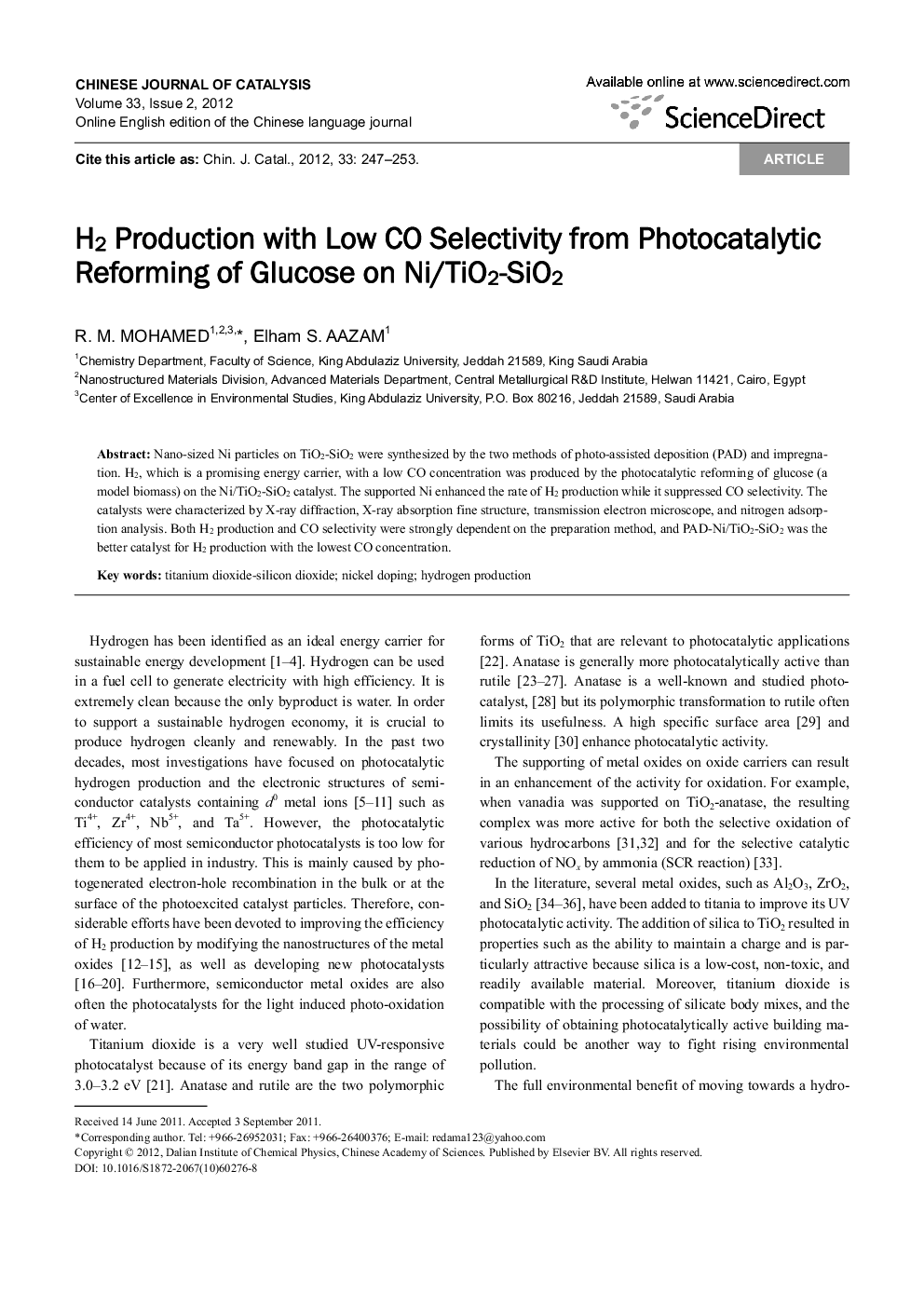| Article ID | Journal | Published Year | Pages | File Type |
|---|---|---|---|---|
| 60178 | Chinese Journal of Catalysis | 2012 | 7 Pages |
Nano-sized Ni particles on TiO2-SiO2 were synthesized by the two methods of photo-assisted deposition (PAD) and impregnation. H2, which is a promising energy carrier, with a low CO concentration was produced by the photocatalytic reforming of glucose (a model biomass) on the Ni/TiO2-SiO2 catalyst. The supported Ni enhanced the rate of H2 production while it suppressed CO selectivity. The catalysts were characterized by X-ray diffraction, X-ray absorption fine structure, transmission electron microscope, and nitrogen adsorption analysis. Both H2 production and CO selectivity were strongly dependent on the preparation method, and PAD-Ni/TiO2-SiO2 was the better catalyst for H2 production with the lowest CO concentration.
Graphical abstractH2 production from the photocatalytic reforming of biomass on PAD-Ni/TiO2-SiO2 is promising for producing H2 for fuel cells.Figure optionsDownload full-size imageDownload as PowerPoint slide
